Pacific Heights
Looking for the perfect secluded island hideaway? Antonia Windsor seeks out the least-discovered corners of paradise that are dotted through this wide blue ocean.
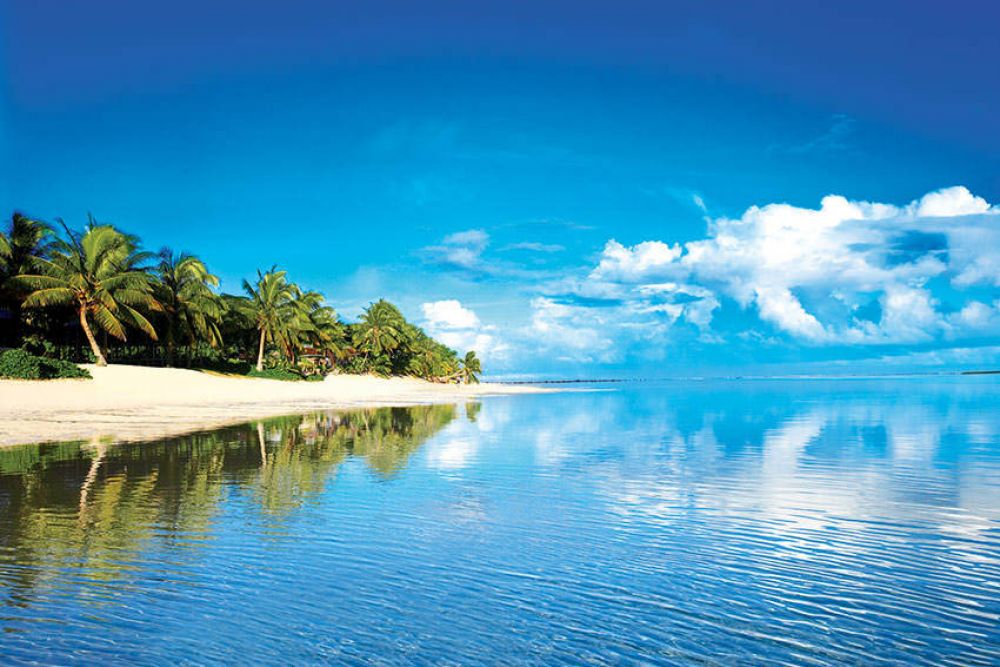
Looking for the perfect secluded island hideaway? Antonia Windsor seeks out the least-discovered corners of paradise that are dotted through this wide blue ocean.
Often described as the last frontier of the Pacific, the Solomons are made up of seven mountainous, forested islands and almost 1,000 smaller islands, some little more than raised reefs. Mass tourism has yet to reach this outpost, and with few boats the waters here are crystal clear. For divers, this place equates to Mecca and most tourists arrive into the main island Guadalcanal and then immediately get a connecting flight to Gizo, the capital of the Western Province, where the diving is among the best in the world.
Around Gizo, hundreds of Second World War ships and aircraft litter the lagoon floor, forming artificial reefs that attract scores of fish and different species of coral. Equally spectacular is Marovo lagoon where you might witness an eruption of Kavachi, one of the Pacific’s most active underwater volcanos. One of the most stunning places to stay here is Uepi Island Resort, nestled on the edge of tropical forest on one of the lagoon islets. You can stay in a wooden bungalow on the water’s edge and be lulled to sleep by the sound of the breeze on the water; by day the dive shop will make sure you have all the equipment you need to explore this underwater Elysium.
Another laid-back resort is Fat Boys, on Mbabanga Island, just a short boat journey from Gizo. Here you can relax, drink a SolBrew (the local lager) and watch the fish dart in the crystal-clear waters. When you’re all dived out, treat yourself to a spot of splendour on Tavanipupu Private Island, where local chefs will sear you fresh tuna straight from the sea and flickering lanterns will lead you to a bed fit for King Solomon himself.
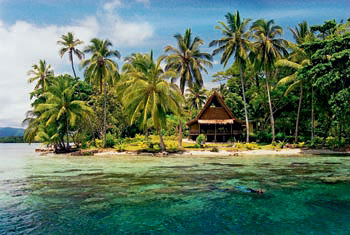
Uepi Island Resort Doubles from £265. http://uepi.com
Tavanipupu Private Island Doubles from £180. http://tavanipupu.com
Fat Boys Doubles from £105. http://fatboysgizo.com
An archipelago of more than 200 limestone islands south-east of the Philippines, of which only eight are inhabited, Palau is a wellkept secret as far as tourism is concerned. The islands are host to a vast spectrum of marine wildlife, such as giant clams that weigh a quarter of a tonne and a lake teeming with about 13 million stingless jellyfish. Palau has one of the world’s greatest concentrations of corals and with more than 1,500 species of fish, plunging reef walls, coral gardens and Second World War wrecks, the diving here is unmissable.
There is a five-star resort on the main island, Koror, which will make you wonder why more people don’t come here, before making you glad they don’t. The Palau Pacific Resort is backed by 64 acres of tropical gardens and fronted by a pristine white beach and that ever-blue ocean. The rooms are more basic than you might find in similar resorts elsewhere in the Pacific, but the resort has its very own reef to snorkel as well as a spa, hot tub and buffet restaurant.
For a more intimate experience, try the Palau Plantation Resort, where 15 A-frame huts are laid out in a lush, overgrown plantation; you’ll find a similar, more affordable setup at The Caroline’s Resort, where seven wooden bungalows cling to the hillside, each with their own balcony and views over rock islands. The majority of tourists here come from Japan, so you’ll find an Asian influence in the cooking and, naturally, local seafood features on every menu. A local delicacy to look out for, if you’re feeling adventurous, is fruit bat soup. You’ll find it at Carp restaurant in Koror, which serves both local Palauan and Japanese cuisine.
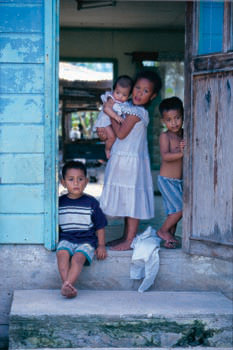
Palau Pacific Resort Doubles from £175. http://palauppr.com
Palau Plantation Resort Doubles from £110. http://palau-resort.com
The Caroline’s Resort Doubles from £75. http://carolinesresort.com
The small, remote Cook Islands are a Polynesian paradise of manageable proportions. You’ll fly into Rarotonga, a mountainous, jungle-clad island with turquoise waters lapping over coral reef. You’ll probably want to just flop on the beach with a snorkel close to hand, but there are 14 other islands to explore too.
It’s certainly worth dragging yourself off the sand and into one of the 50 restaurants on Rarotonga (not bad for a population of 14,000). For a spot of fine dining, try Tamarind House or Windjammer restaurants. If you want to tuck into the local cuisine, then look out for te ika mata, a traditional raw fish salad marinated in coconut and lime, which you’ll find at the popular seafood restaurant Trader Jacks.
The family-friendly Rarotongan Beach Resort and Spa on Aroa Beach is a good place to base yourself without breaking the bank, after which you can pick up a local flight to quiet little Atiu, with its population of just over 500. Here there is no internet, no mobiles and hardly any tourists. Atiu Villas will rent you a timber-framed hut and a scooter so you can loop the island – just don’t park it under a coconut palm or try to ride it after drinking the local orange-flavoured jungle juice! If you want to splash out for your last few nights, head to the Pacific Resort on the second-largest island, Aitutaki. This boutique five-star property has a number of luxurious beach-front bungalows, plenty of watersports and a chance to experience a traditional ‘island night’ where you can sample the traditional feast umukai – vegetables, meat and fish wrapped in banana leaves and cooked underground.
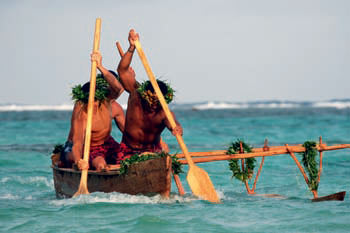
Atiu Villas Villas from £75. http://atiuvillas.com
Pacific Resort Aitutaki Bungalows from £425. http://pacificresort.com
The Rarotongan Beach Resort and Spa Doubles from £130.
Currently being hailed the new Fiji, this is the South Pacific of, well, South Pacific – the small island of Manono, off the coast of Upolu, was, according to local tradition, the inspiration for the fictional Bali Ha’i in the Rodgers and Hammerstein musical. Of this small group of just nine islands, Upolu and Savai’i are the most populated and the most popular with tourists.
Upolu’s most famous resident was the Scottish writer Robert Louis Stevenson, who washed up here on his final Pacific voyage and stayed until he died (although he did have 72 tonnes of furniture shipped out to him). The locals gave him the title of Tusitala, ‘story teller’, and buried him on a prime spot looking out to sea. Just up the road from his house, which is now the Robert Louis Stevenson Museum, you will find the Manumea Hotel, a good budget choice, wedged into the hillside looking down over the capital, Apia. Alternatively, you could throw caution to the winds and check into the luxurious Sinalei Reef Resort and Spa, where you can doze in a hammock outside your private fale (villa) – it’s easy to see why Stevenson never made it home.
If you are feeling adventurous, then take the one-hour boat journey to the large, mountainous island Savai’i, where you can witness the traditional way of life in the small villages that dot the coastline. Here in the north of the island there’s a resort, Le Lagoto, which, with its new infinity pool, is picture-perfect. It’s also in a good position for exploring the island’s ancient lava fields and turtle sanctuary. Wherever you go you are sure to be well fed – the local speciality is lu’au, a mixture of taro (a root vegetable), coconut cream and onions wrapped in taro leaves and then baked underground – it really is the taste of paradise.
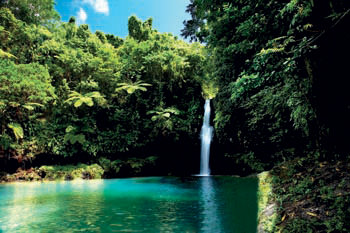
Sinalei Reef Resort Fales from £300. http://sinalei.com
Manumea Hotel Suites from £100. http://manumearesort.com
Le Lagoto Ocean-front bungalows from £145. http://lelagoto.ws
Perhaps the least-known and least-visited of the Pacific island nations, this collection of atolls straddles the equator and attracts little more than 3,000 tourists a year. This is the place to sample what island lifestyle might have been like before tourism came to the Pacific.
The main island, Tarawa, was the site of one of the most fierce fights between US marines and Japanese troops in the Second World War, and there are many relics to be explored, while on Kiritimati (Christmas Island), there’s thrilling surfing and world-class fishing; add to this some white sand beaches, blue lagoons and colourful local traditions and you have the recipe for a great holiday – just don’t expect fluffy towels and infinity pools: Kiribati is for the traveller rather than the tourist and there are no five-star resorts here.
To get a taste of local life, stay in an open-fronted traditional thatched bungalow on stilts, set over the lagoon at Tabon Te Keekee in Abatao, North Tarawa; this consists of five basic huts and will give you a local breakfast and evening meal. Or you can try Tabuki Retreat, a couple of self-contained cottages on a beach in North Tarawa, opened last year by an Australian couple. If you are looking to explore Kiritimati, then The Villages is the newest offering here. You’ll stay in a private bungalow on the beach with air conditioning; dinner is served in a shared dining room.
Local cuisine includes suckling pig with liver sauce and deep-fried bone-fish. Coconut palms are the lifeblood of Kiribati with all parts of the plant used for food, drink, medicine, boat-building and shelter. At the maneaba, the community meeting house, you can join in traditional dancing, singing and storytelling and sample some toddy, made from fermented coconut sap.
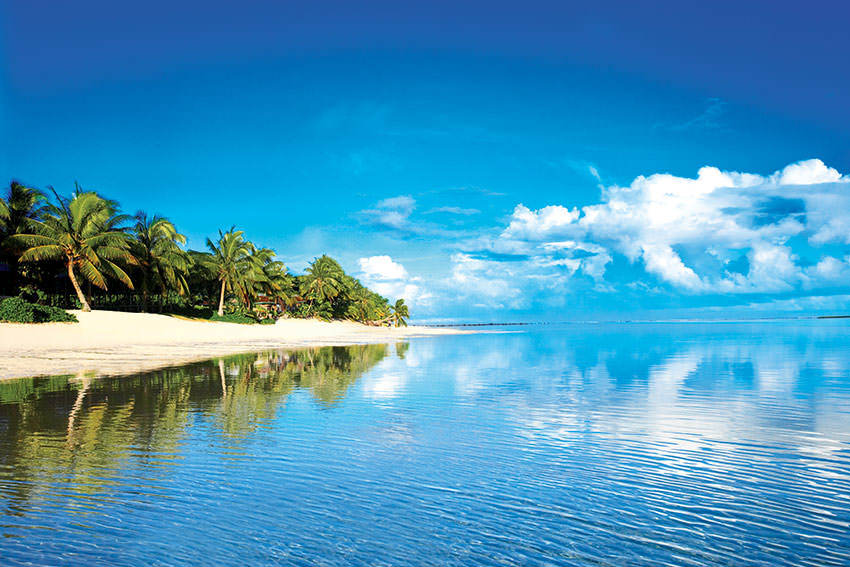
Tabon Te Keekee Villas from £30. http://kiribatiholidays.com
Tabuki Retreat Villas from £60. http://kiribatitourism.gov.ki
The Villages Doubles from £45. http://thevillagesci.com
Vanuatu has come of age and is now a serious contender in the hunt for unadulterated Pacific beauty – with facilities. Dive centres, resorts, day spas, restaurants and galleries have all mushroomed in recent years on the islands of Efaté, Tanna and Espiritu Santo (there are 80 more islands to explore). Natural wonders are legion across this archipelago: it boasts eight active volcanos, hot springs, freshwater lakes, national parks and lagoons.
The capital Port Vila, on Efaté, is a melting pot of languages and cultures (the country was formerly controlled by the British and French), which means you can buy croissants as easily as coconuts and limes – and there is a steady supply of real champagne. The land-loving coconut crab is unique to this area, but as it has been hunted almost to extinction the ethically minded will want to avoid it if it comes up on local menus; instead try the lobster mornay at Tamanu on the Beach, south of Port Vila – also a great place to stay with its white colonial-style beach cottages. At L’Houstalet Restaurant, also in Port Vila, you can even try flying fox, but the most renowned local delicacy is the famed Santo beef: you’ll find it served at the excellent-value hillside lodge Deco Stop on Espiritu Santo. If you want to splash out, head to Ratua Private Island, where you can relax in your villa, swim off a private beach and have spa treatments in view of the endless blue.
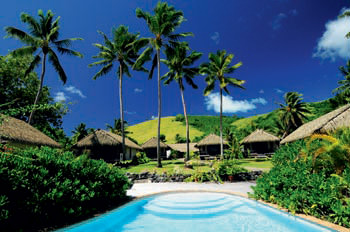
Tamanu on the Beach Villas from £170. http://tamanuonthebeach.com
Deco Stop Lodge Doubles from £80. http://decostop.com.vu
Ratua Private Island Villas from £300. http://ratua.com.au
Subscribe and view full print editions online... Subscribe